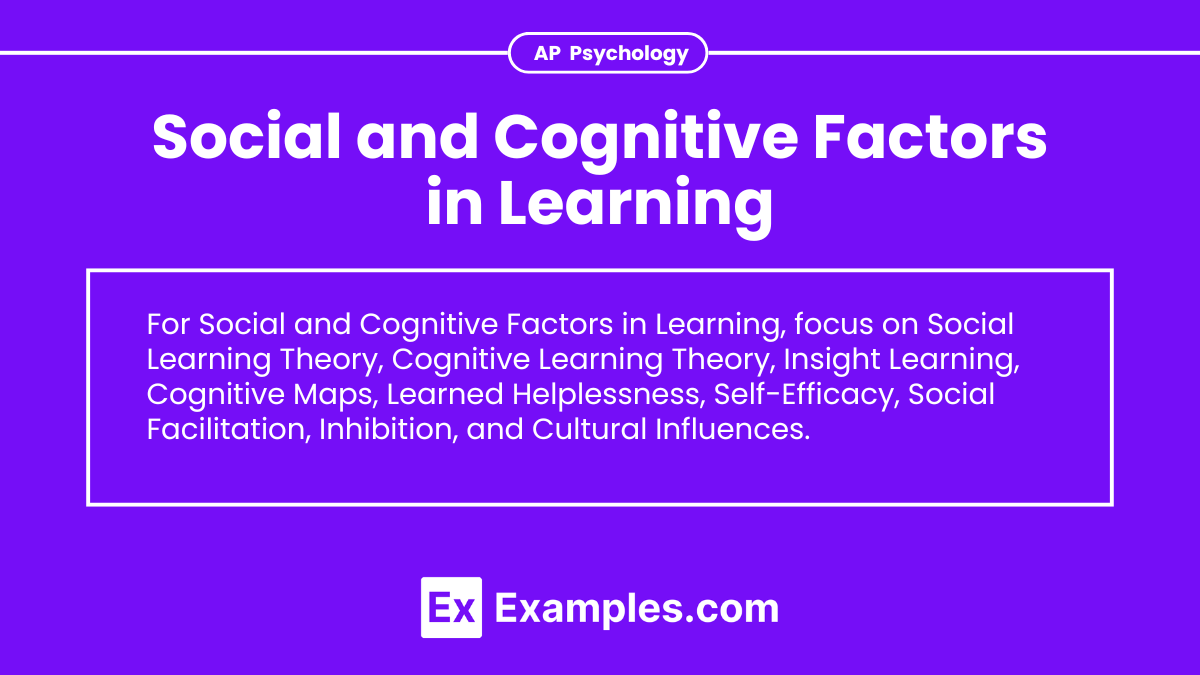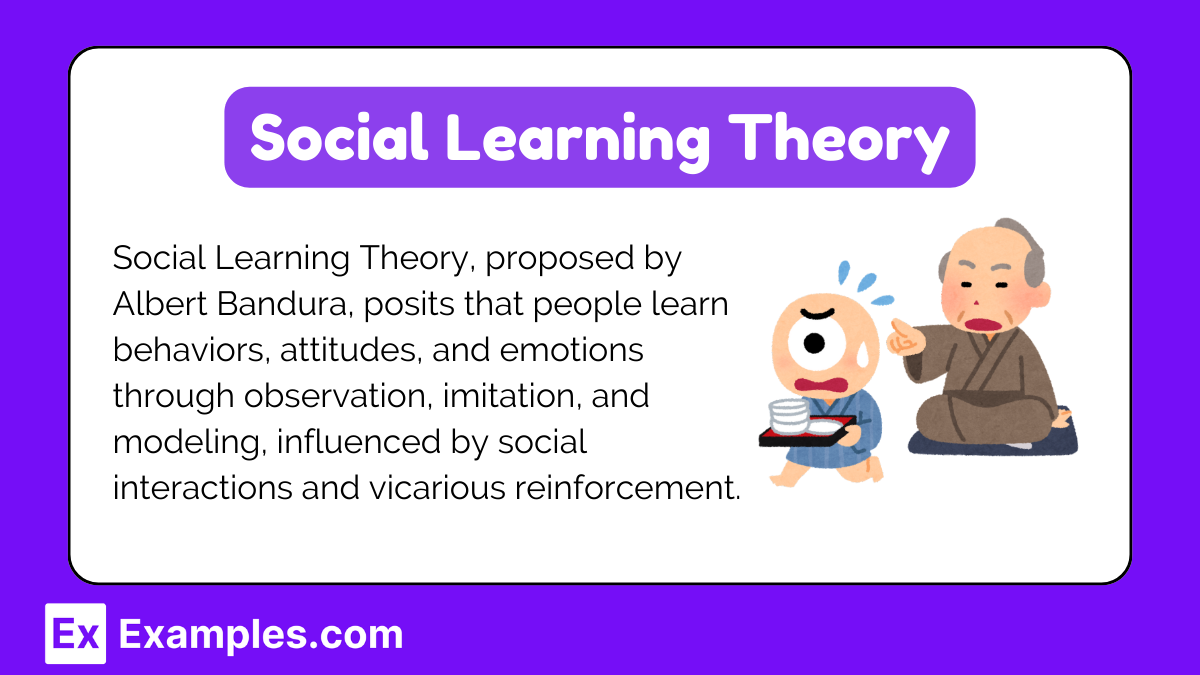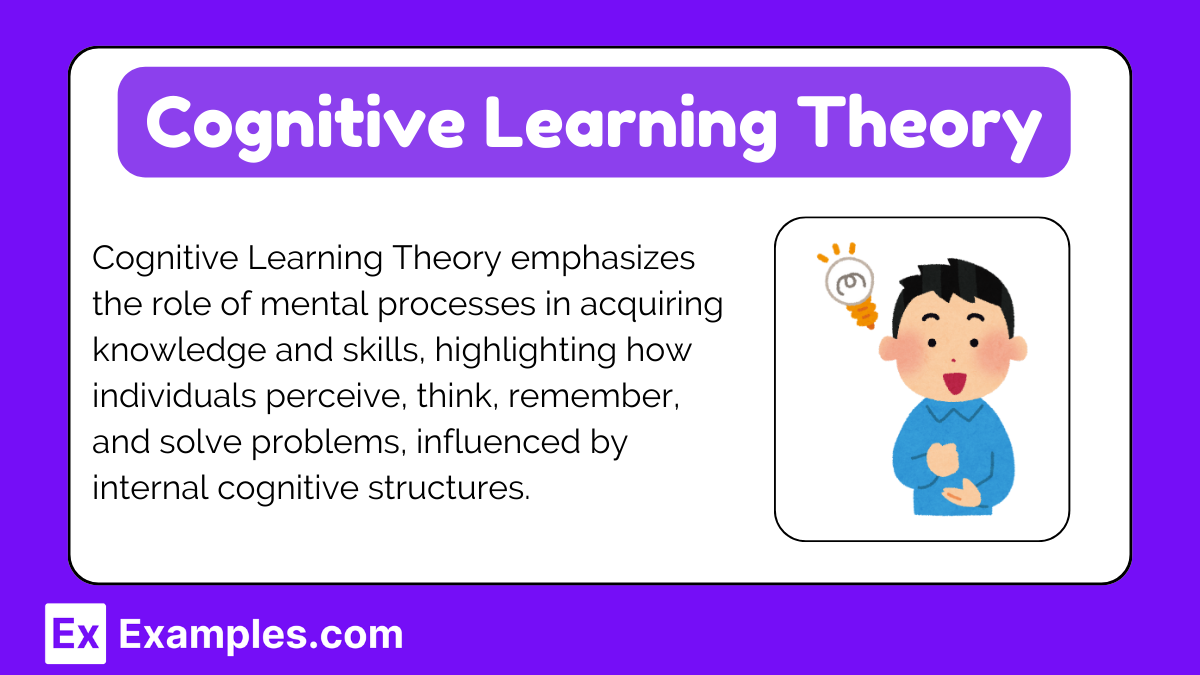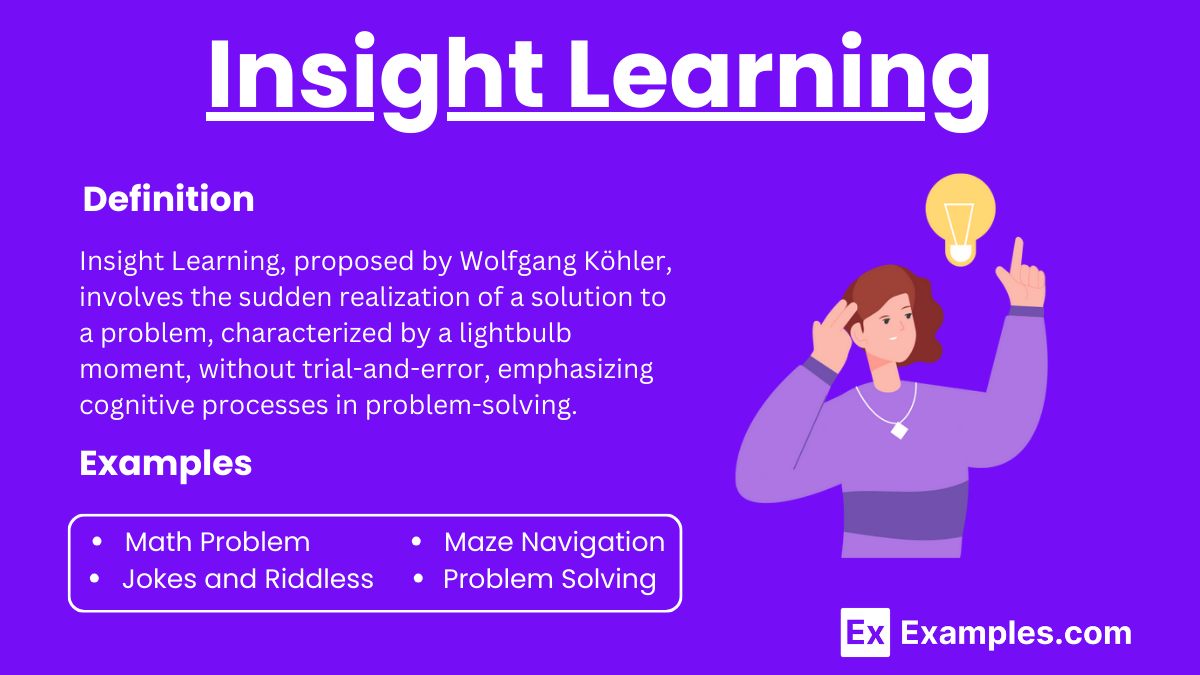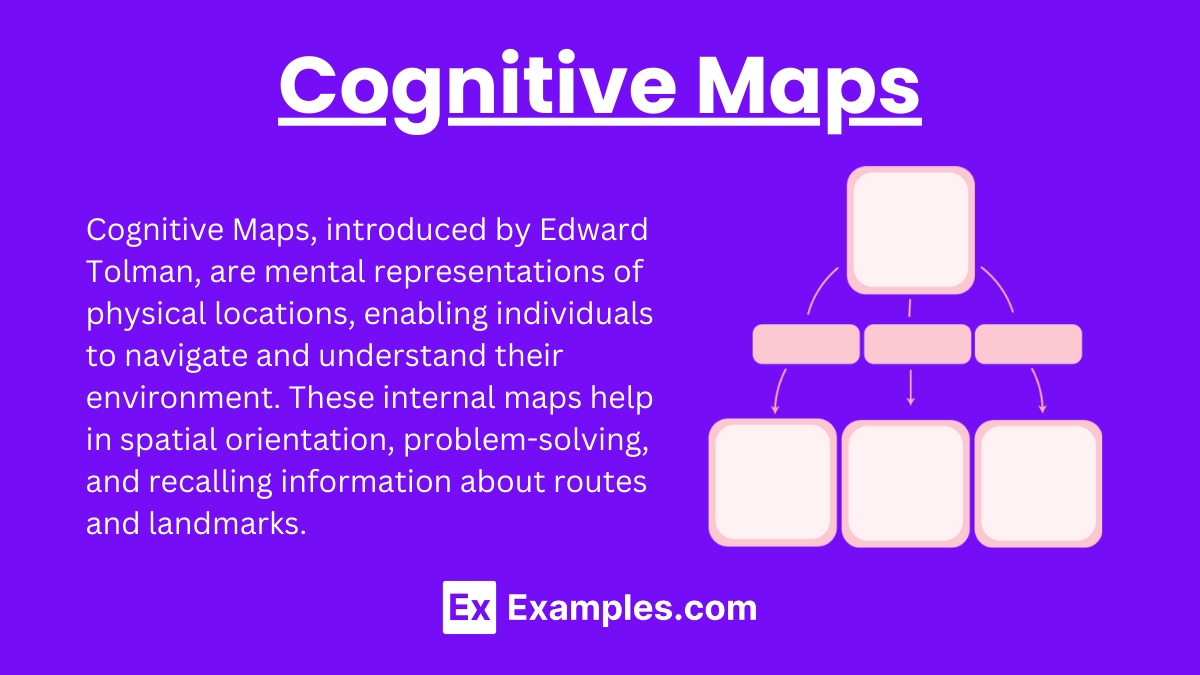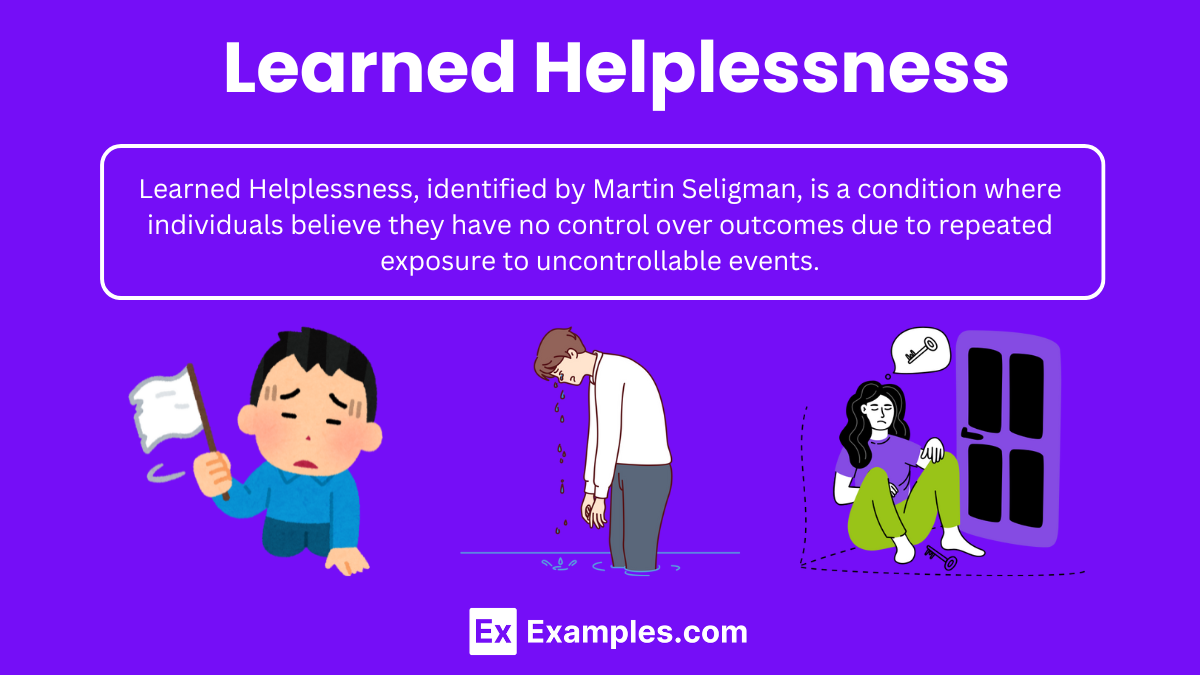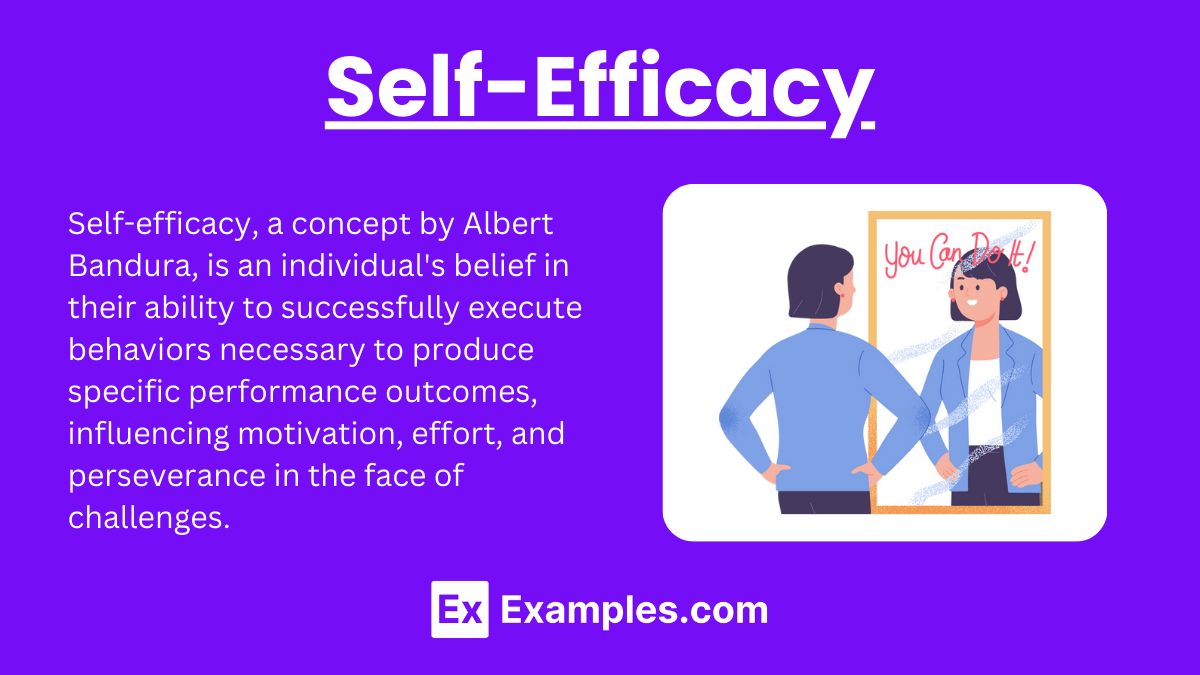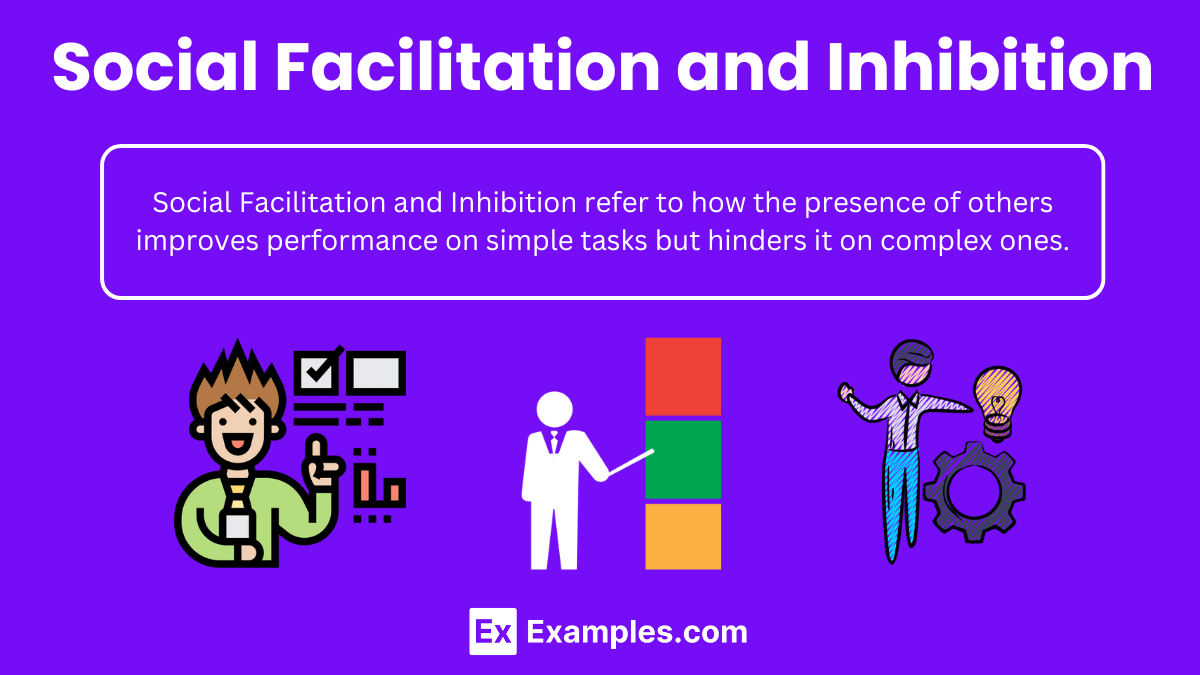In the study of learning, social and cognitive factors explore how individuals acquire knowledge and behaviors through observation, imitation, and mental processes. In AP Psychology, key concepts include Social Learning Theory by Albert Bandura, emphasizing modeling and vicarious reinforcement, and cognitive factors like self-efficacy and cognitive maps. Understanding these principles helps explain how social interactions, cultural tools, and cognitive processes influence learning, providing a Research Framework for analyzing human behavior and development in educational and social contexts.
Learning Objectives
Focus on learning the principles of Social Learning Theory, including modeling, vicarious reinforcement, and the four processes of observational learning (attention, retention, reproduction, motivation). Understand key experiments like Bandura's Bobo Doll study and their implications. Grasp cognitive factors such as self-efficacy, insight learning, and cognitive maps. Explore the influence of social contexts, cultural tools, and peer interactions on learning. Apply these concepts to real-life examples and practice with past exam questions.
1. Social Learning Theory
Social Learning Theory, developed by Albert Bandura, asserts that people learn behaviors, attitudes, and emotions through observing others, imitating their actions, and modeling. This learning process is influenced by factors such as attention, retention, reproduction, and motivation, and is reinforced by observed rewards or punishments.
Key Experiments
Bobo Doll Experiment (1961):
Procedure: Children observed an adult model behaving aggressively towards a Bobo doll (a large inflatable doll). The children were then allowed to play in a room with a Bobo doll.
Findings: Children who observed the aggressive model were more likely to exhibit aggressive behaviors towards the doll compared to those who observed a non-aggressive model or no model at all. This experiment demonstrated that children could learn and imitate behaviors they observed in others.
Key Concepts
Modeling
Definition: Learning through the observation and imitation of others' behaviors.
Examples: A child learning to tie their shoes by watching their parents, or students adopting study techniques demonstrated by a teacher.
Vicarious Reinforcement
Definition: Learning by observing the consequences of another person's behavior. If the observed behavior is rewarded, the observer is more likely to imitate it.
Examples: A student sees a peer praised for raising their hand before speaking and starts doing the same.
Four Processes of Observational Learning
Attention: Paying attention to the model is crucial. Various factors influence attention, such as the model's attractiveness, competence, and the perceived similarity to the observer.
Retention: The ability to remember the behavior that was observed. This involves symbolic coding, mental images, cognitive organization, symbolic rehearsal, and motor rehearsal.
Reproduction: The ability to reproduce or imitate the observed behavior. This depends on the observer’s physical capabilities and the accuracy of their memory.
Motivation: Having a reason to imitate the behavior, which can be influenced by past reinforcement, promised incentives, or vicarious reinforcement.
Self-Efficacy
Definition: Belief in one's ability to succeed in specific situations.
Impact on Learning: Higher self-efficacy can enhance motivation and persistence in learning tasks.
Sources of Self-Efficacy: Mastery experiences, vicarious experiences, verbal persuasion, and physiological states.
2. Cognitive Learning Theory
Cognitive Learning Theory focuses on the mental processes involved in learning, emphasizing how people perceive, think, remember, and solve problems. It highlights the importance of internal cognitive structures and processes, such as schema and memory, in understanding how individuals acquire, organize, and utilize knowledge and skills.
Key Theorists and Concepts
Jean Piaget
Stages of Cognitive Development: Piaget proposed that children go through four stages of cognitive development:
Sensorimotor Stage (0-2 years): Learning through sensory experiences and manipulating objects.
Preoperational Stage (2-7 years): Development of language and symbolic thinking but lack of logical reasoning.
Concrete Operational Stage (7-11 years): Development of logical thinking about concrete events, understanding the concept of conservation.
Formal Operational Stage (12+ years): Development of abstract and logical thinking.
Lev Vygotsky
Sociocultural Theory: Vygotsky emphasized the influence of social interactions and cultural tools on cognitive development.
Zone of Proximal Development (ZPD): The difference between what a learner can do without help and what they can achieve with guidance and encouragement from a skilled partner.
Scaffolding: Support provided by a more knowledgeable other to help the learner achieve tasks within their ZPD.
Jerome Bruner
Discovery Learning: Bruner advocated for learning as an active process where learners construct new ideas based on their current and past knowledge.
Spiral Curriculum: Revisiting topics over time at increasing levels of complexity to reinforce learning.
3. Insight Learning
Insight Learning, proposed by Wolfgang Köhler, involves a sudden and clear realization of the solution to a problem without trial-and-error. This type of learning highlights the importance of cognitive processes, where an individual suddenly understands the relationships between different elements of a problem, leading to an "aha" moment.
Key Concepts
Sudden Realization
Insight learning is characterized by an "aha" moment, where the solution to a problem suddenly becomes clear.
This process contrasts with incremental learning, where solutions are gradually discovered through repeated attempts.
Cognitive Restructuring
Insight involves reorganizing one's mental representation of a problem, leading to a new perspective that makes the solution obvious.
This cognitive shift allows individuals to see relationships and patterns that were previously unnoticed.
Gestalt Psychology
Köhler's work in insight learning is rooted in Gestalt psychology, which emphasizes understanding the whole structure of a problem rather than breaking it down into smaller parts.
Gestalt principles, such as the idea that the whole is greater than the sum of its parts, are central to insight learning.
Key Experiments
Köhler's Chimpanzee Studies (1925)
Setup: Köhler placed chimpanzees in a room with bananas placed out of reach and provided tools like sticks and boxes.
Observation: After some initial frustration, chimpanzees demonstrated insight by using sticks to pull bananas closer or stacking boxes to reach them.
Conclusion: The chimpanzees showed a sudden understanding of how to use the tools available to solve the problem, supporting the idea of insight learning.
4. Cognitive Maps
Cognitive Maps, introduced by Edward Tolman, are mental representations of an individual's physical environment, aiding in navigation and understanding spatial relationships. These mental models allow people to visualize and recall the layout of areas, routes, and landmarks, facilitating problem-solving and efficient movement through familiar and unfamiliar spaces.
Key Concepts
Mental Representations
Cognitive maps are mental images or representations of the physical world, allowing individuals to navigate their environment effectively.
These maps include information about locations, distances, directions, and spatial relationships between different objects and places.
Spatial Learning
Cognitive maps are developed through spatial learning, which involves acquiring knowledge about the environment through exploration and experience.
This type of learning enables individuals to form mental models of their surroundings, which can be used to plan routes, find shortcuts, and avoid obstacles.
Tolman's Experiments
Rats in Mazes (1948): Tolman conducted experiments where rats were placed in mazes to find food. The rats demonstrated the ability to navigate the mazes efficiently, suggesting they had formed cognitive maps of the maze layout.
Latent Learning: Tolman observed that rats could learn the layout of a maze without receiving any immediate rewards, a phenomenon he termed latent learning. This indicated that the rats were creating cognitive maps even without reinforcement.
5. Learned Helplessness
Learned Helplessness, identified by Martin Seligman, is a psychological condition where individuals, after repeated exposure to uncontrollable and adverse events, come to believe they have no power to change their situation. This belief leads to passive behavior, decreased motivation, and can contribute to feelings of depression and resignation.
Key Aspects
Origin and Experiments
Martin Seligman's Dog Experiments (1967): Seligman conducted experiments where dogs were subjected to inescapable shocks. Later, when the opportunity to escape was presented, the dogs did not attempt to avoid the shocks, demonstrating a lack of control and learned helplessness.
Human Studies: Similar patterns have been observed in humans, where individuals subjected to uncontrollable stressors often exhibit passive behavior even when control is possible.
Mechanisms
Perception of Control: Learned helplessness arises from the perception that one's actions have no effect on outcomes, leading to a sense of powerlessness.
Cognitive, Emotional, and Behavioral Effects:
Cognitive: Difficulty in learning that new responses can control outcomes.
Emotional: Feelings of depression, anxiety, and decreased motivation.
Behavioral: Passive behavior and a lack of initiative in situations where action could lead to positive outcomes.
Symptoms and Consequences
Lack of Motivation: Individuals may stop trying to change their circumstances due to the belief that their efforts will be futile.
Depression and Anxiety: Prolonged exposure to uncontrollable situations can lead to emotional distress and mental health issues.
Reduced Performance: Learned helplessness can negatively impact performance in academic, professional, and personal settings, as individuals may avoid challenges and opportunities for success.
Applications and Real-Life Examples
Education: Students who experience repeated academic failures may develop learned helplessness, believing they cannot succeed
6. Self-Efficacy
Self-efficacy, conceptualized by Albert Bandura, is the belief in one's ability to succeed in specific tasks or situations. It affects how people think, feel, and act, influencing their motivation, effort, and persistence. High self-efficacy leads to greater resilience and willingness to take on challenges.
Key Aspects
Sources of Self-Efficacy
Mastery Experiences: Successfully completing a task strengthens self-efficacy, while failure can undermine it. Consistent success builds confidence in one's abilities.
Vicarious Experiences: Observing others, especially peers or role models, succeed can enhance self-efficacy. Seeing someone similar to oneself succeed through effort increases belief in one's own capabilities.
Verbal Persuasion: Encouragement and positive feedback from others can boost self-efficacy. When trusted individuals express confidence in one’s abilities, it can enhance self-belief.
Physiological and Emotional States: Positive emotions and reduced stress can improve self-efficacy. Conversely, anxiety and fatigue can lower self-efficacy.
Impact on Behavior and Performance
Motivation: High self-efficacy leads to greater motivation to take on challenges and persist in the face of difficulties. Individuals are more likely to set challenging goals and stay committed to them.
Effort and Persistence: Those with high self-efficacy are more likely to invest effort in their tasks and persist longer, even when faced with obstacles.
Resilience: High self-efficacy contributes to resilience, enabling individuals to recover more quickly from setbacks and maintain a positive outlook.
7. Social Facilitation and Inhibition
Social Facilitation and Inhibition refer to the impact of an audience on individual performance. Social Facilitation occurs when the presence of others enhances performance on simple or well-practiced tasks. In contrast, Social Inhibition happens when the presence of others hinders performance on complex or unfamiliar tasks, due to increased pressure and anxiety.
Key Experiments:
Norman Triplett (1898): Conducted one of the first experiments on social facilitation, observing that cyclists rode faster when competing against others than when racing alone.
Robert Zajonc (1965): Proposed that the presence of others increases arousal, which enhances the performance of well-practiced tasks but impairs the performance of complex or new tasks.
Mechanisms:
Arousal: The presence of others increases physiological arousal, which can enhance performance on tasks that are straightforward or familiar.
Evaluation Apprehension: Concern about being evaluated by others can motivate individuals to improve their performance.
Social Inhibition
Definition: The tendency for individuals to perform worse on complex or new tasks when in the presence of others.
Key Experiments:
Zajonc's Theory: Extended his theory to explain that increased arousal caused by the presence of others can hinder performance on difficult or unfamiliar tasks due to heightened anxiety and pressure.
Distraction-Conflict Theory: Suggests that the presence of others creates a conflict between focusing on the task and the audience, leading to decreased performance on complex tasks.
8. Social and Cultural Influences on Learning
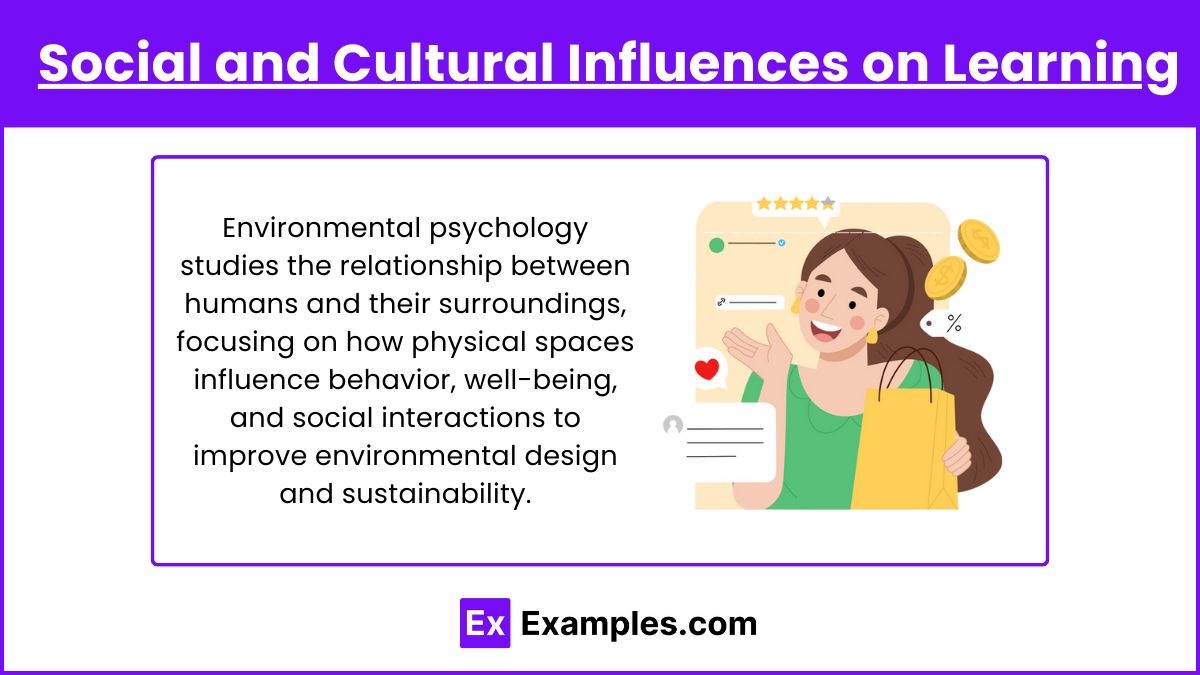
Social and cultural influences on learning encompass how interactions with others, cultural norms, values, language, and societal structures shape and impact the way individuals acquire knowledge and skills. These influences determine educational practices, the content of learning, and the methods by which people are taught and understand the world.
1. Social Influences
Peer Interactions: Learning often occurs through interactions with peers, where students can share ideas, collaborate on tasks, and provide support to one another.
Family Environment: The attitudes, values, and educational support provided by family members can significantly influence a child's motivation and achievement.
Teachers and Mentors: Educators and mentors serve as role models, providing guidance, feedback, and encouragement, which can enhance learning experiences.
2. Cultural Influences
Cultural Norms and Values: The beliefs and values of a culture can shape the content and methods of education. For example, cultures that value collective success may emphasize group learning and cooperation.
Language and Communication: Language is a key tool for learning, and cultural differences in language use and communication styles can impact how information is conveyed and understood.
Educational Practices: Different cultures have distinct educational traditions and practices, such as rote memorization versus critical thinking, which affect how learning is approached.
3. Sociocultural Theory
Lev Vygotsky: A prominent figure in understanding the role of social and cultural influences on learning. He proposed that cognitive development is largely a social process, and that interaction with more knowledgeable others (e.g., parents, teachers, peers) is crucial for learning.
Zone of Proximal Development (ZPD): The gap between what a learner can do independently and what they can achieve with guidance and encouragement from a skilled partner.
Scaffolding: The support provided by more knowledgeable others that helps learners accomplish tasks within their ZPD until they can perform independently.
4. Cultural Tools and Artifacts
Tools for Thought: Cultural tools such as language, symbols, and technology mediate learning and cognitive development. These tools provide ways to organize and interpret experiences.
Shared Practices: Learning often involves participating in shared cultural practices, such as rituals, traditions, and social norms, which provide a framework for understanding and engaging with the world.

